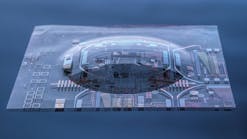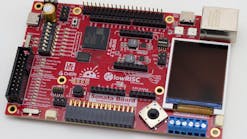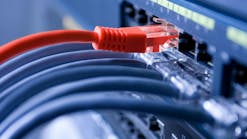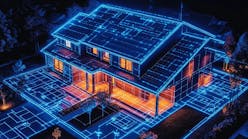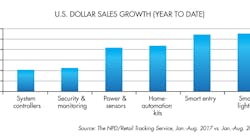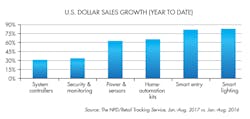The 1960s television sitcom “The Jetsons” featured an early depiction of a smart home. Conveniences included Rosie the robot housekeeper, video chatting, and food available at the touch of a button. There was also an aerocar so that the main character George Jetson could commute to his job, where he worked for one hour a day, two days a week.
The Home of Tomorrow
Over 50 years on, the true smart home – a seamlessly connected space in which our needs are anticipated, our lives are made easier and healthier, and our carbon footprint is reduced –is still some way in the future. But today’s explosion of technological innovation, and AI in particular, is enabling companies to deliver more and more elements of what will ultimately comprise the smart home.
According to an October 2017 report from The NPD Group1 (Fig. 1), 15% of U.S. internet households own a home automation device, up from 10% in April 2016. NPD reported strong growth across all types of devices, with security and monitoring representing the largest share of dollar sales, and product categories such as video doorbells and smart lighting also growing quickly.
1. Sales are on the rise for home-automation devices.

